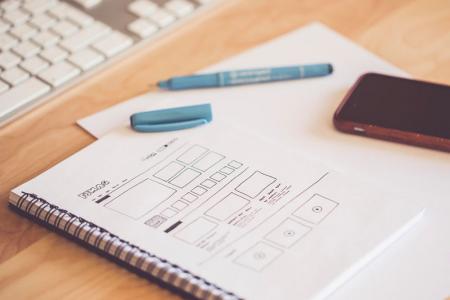
Often as part of a rebrand or a refresh of an organisations visual identity a new logo is required. This can be a tricky part of the process as often a logo is the most recognised part of a brand’s presence and can hold significant value to staff and stake holders. Changing it can sometimes feel like changing who you are. It’s that little symbol that has sat at the top of everything you’ve done for the last X number of years.
Getting a move like this right is very important, so here are 5 practical points to think about.
1. Do you need a new logo?
This is an important question to ask. Why are we doing this? Why the change? When companies feel the urge to change their identity, often it is because they feel something is wrong or they are not growing. A struggling company may believe that a new identity will mean a change of prospects, but this is not true. Changing the badge does not transform a Vauxhall Vectra into an Aston Martin. It’s what makes up the car that matters. If there are problems then a shiny new front will not fix anything and, in fact, will not be a good investment because it’s the wrong solution. However, as part of a well thought out and intentional rebrand, a new logo can become a powerful visual statement.
2. A logo is not your brand
A logo is the most recognised part of your brand. Note I say “part” – it is not your brand. Your brand is at the core of your organisation, defining who you are, what you are about and guiding all areas of your business. That prized corner of your customer’s mind. The various touch points of your brand express these and more about your organisation and, visually, the logo is the cornerstone. A memorable rallying point for customers to focus their experience. However, just having a good logo is not enough. A logo is nothing without the substance of the brand behind it and a quality offering to your customer. A logo as part of a visual identity gives people something to focus their emotions on, whether positive or negative. Indeed, due to it’s prominence a logo holds a powerful position and so, very quickly, a poor quality offering from a company or a bad experience can be associated with the logo with these feelings being regurgitated at the mere sight of “that logo”.
3. Flexibility
Today, logos need to work across a wide range of media such as annual reports, posters, a website, mobile applications, letters, advertisements etc. Further more, with the ubiquity of mobile devices and the huge variety in device screen size, flexibility in a logo is an absolute necessity. A logo can look great when laid out beautifully in a pdf or printed large on lovely smooth, expensive paper on the wall of the design agency but what happens when it’s shrunk down onto a mobile device or as an app icon? Making sure your mark is recognisable at varying sizes is key and can avoid some unpleasant headaches in the future. If it is required to sit alongside other logos shrunk down at the foot of a document, as often is the case, will it be visible? Will it stand out?
There are many situations where your logo is required to be used in black and white or to sit on a solid colour or over a detailed image. Will it stand up in these situations? Those lovely gradients of colour fading to white may look great on the pdf presentation but what happens when it needs to be used on that advertising poster? It could very quickly look messy and unprofessional. Your logo is arguably your most valuable visual asset and could be the only time a potential customer gets to “see” you or engage with your brand.
This is not to say you can’t have colour and detail in a logo but thinking about how the logo could be used, not just now but in the future, is a key factor in the process.
4. Simplicity
A trend in recent times in logo design (particularly in the pre-iOS7 days) has been to use gradients of colour and 3D-esque effects. The idea being to reflect a modern, dynamic attitude – which basically means because everyone else is doing it. Now, these can be lovely when their application is controlled and managed, such as on company stationary or the website, but what happens if it needs to sit on top of a detailed image or a clashing colour? Often, in such cases, an overly detailed and complex logo can get lost and, in fact, ends up having less impact.
To get around these problems, various complex and intricate solutions are often provided in the brand guidelines, such as only use the logo in this form, in this location and it must have this exact colour gradient behind it stopping at this precise point etc. All to make sure that it remains visible. This makes using the main visual mark of your brand incredible tricky, not only for you but also other designers who may need to use it when creating artwork in the future and can lead to poor communication and representation of your brand.
Complexity like this can also be a barrier to scalability as the logo may need to be an image to accommodate all the details. A logo really should be in vector format so it scales up and down in size without losing quality. A complicated logo can lead to a complicated message to your audience.
5. Don’t follow fads
As discussed in the previous point, many logos that are created tend to follow fashion rather than being a genuine, honest and clear mark for your company and your market. It is very easy to look at the logos of successful companies and want something similar, because you know they have proved themselves in the market, which takes some of the unknown out of the equation. However, as we’ve already seen, a logo in and of itself does not make success or failure. It is a focal point for the public to hang their experiences about your company on, for good or ill. Following fads in logo design simply means it will date quickly, be bland in the market place and provide very little uniqueness. This is not to be confused with using visual queues that your audience will understand, as these can be helpful in quickly placing a company or communicating a certain message. However, there is a fine line between this and following trends for the sake of popularity or just through fear of not following your peers.





